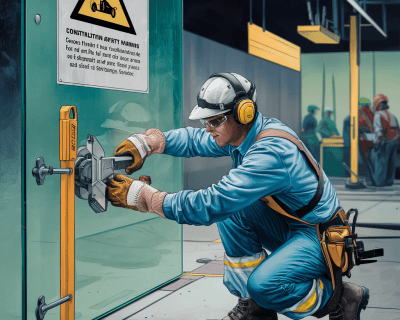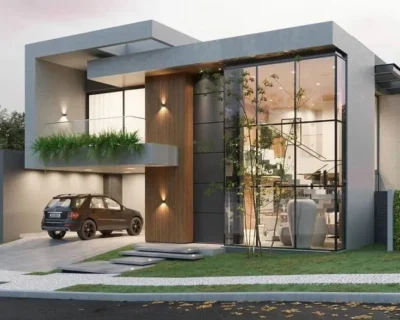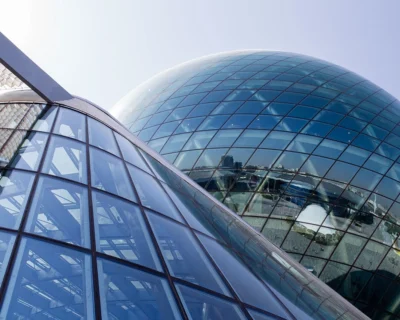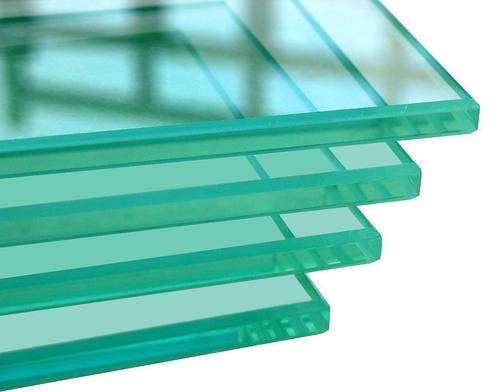
Toughened vs. Laminated Glass for Your Building Project
The allure of sleek, modern glass walls and buildings is undeniable. However, safety remains a paramount concern in any construction project. When it comes to choosing the right type of glass, two options stand out: toughened glass and laminated glass. TSL Industries, a leading provider of glass installation services, dives deep into understanding the safety benefits of each type to help you make an informed decision.
Toughened Glass: Strength in Resilience
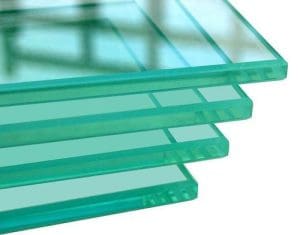
Also known as tempered glass, toughened glass undergoes a heat treatment process that significantly enhances its strength and impact resistance compared to regular annealed glass. This makes it significantly less likely to shatter upon impact, and when it does, it breaks into small, blunt fragments, reducing the risk of serious injury.
Advantages:
- High impact resistance: Can withstand significant force before breaking.
- Safer breakage: Shatters into small, blunt fragments.
- Heat resistance: Suitable for applications near heat sources.
Here are some common applications of toughened glass:
Building and construction: Toughened glass is widely used in building and construction due to its strength, durability, and safety features. It is commonly used in;
- Doors and windows: Toughened glass is used in both interior and exterior doors and windows, including shower doors, patio doors, and storefronts.
- Facades: Toughened glass is used in curtain wall systems and other building facades to create a sleek, modern look and allow for natural light penetration.
- Partitions: Toughened glass partitions are used in offices, homes, and other commercial spaces to create open and airy environments while still providing sound and visual separation.
- Balustrades and railings: Toughened glass is used in staircases, balconies, and other railings to provide safety and a clear view.
- Side and rear windows: Toughened glass is increasingly being used inside and rear windows to improve safety and passenger protection.
- Consumer products: Toughened glass is used in a variety of consumer products, such as:
- Appliance glass: Toughened glass is used in oven doors, refrigerator shelves, and other appliance components.
- Tabletops: Toughened glass is used in tabletops for its durability and sleek appearance.
- Cookware: Toughened glass is used in lids for pots and pans.
- Electronics: Toughened glass is used in the screens of smartphones, tablets, and other electronic devices.
Laminated Glass: A Shield for Security and Safety
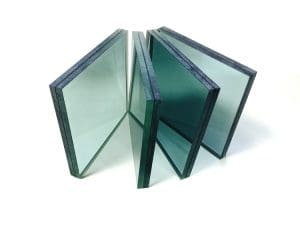
Laminated glass comprises two or more glass panes bonded together with a strong interlayer, typically made of polyvinyl butyral (PVB). This interlayer holds the glass fragments in place even if they break, creating a barrier against falling debris and potential intruders. Additionally, laminated glass provides superior sound insulation and UV protection.
Advantages:
- Enhanced security: Interlayer makes it difficult to break through.
- Safety barrier: Retains broken glass fragments, preventing injuries.
- Improved sound insulation: Reduces noise transmission by using acoustic PVB glass.
- UV protection: Blocks harmful UV rays.
Main uses of Laminated Glass
High impact resistance: Laminated glass is significantly harder to break through compared to regular glass, making it ideal for:
- Security doors and windows: Used in banks, jewelry stores, and other high-security locations.
- Showcases: Protects valuable items in museums and retail stores.
- Skylights and overhead glazing: Ensures safety in case of breakage.
- Glass floors and railings: Offers a safe walking surface and prevents falls.
- Soundproofing: The interlayer dampens sound waves, making laminated glass ideal for:
- Recording studios, indoor theatres, and control rooms: Reduces sound transmission.
- Airport terminals and busy areas: Provides noise control.
- Hotel room partitions: Improve privacy and reduces noise disturbance.
- UV protection: The interlayer can block harmful ultraviolet rays, protecting furnishings and artwork from fading. This makes it useful for:
- Large windows and curtain walls: Protects interiors from sun damage.
- Aesthetics: Laminated glass can be combined with various films and interlayers to create decorative effects, such as colored or patterned glass, for architectural and design applications
Choosing the Right Glass for Your Needs
The ideal type of glass for your building project depends on various factors, including:
- Application: Consider the intended use of the glass (e.g., windows, doors, partitions) and the level of security and safety required.
- Budget: Toughened glass is generally more affordable than laminated glass.
- Building regulations: Certain building codes might mandate specific glass types for certain applications.
TSL Industries Your Trusted Partner for Glass Solutions
At TSL Industries, we understand the importance of choosing the right glass to meet your specific needs. Our team of experts can guide you through the options and recommend the most suitable solution for your building project, ensuring both safety and aesthetics are met to the highest standards.
FAQs:
Q: Which type of glass is more resistant to breaking?
Toughened glass offers higher impact resistance compared to laminated glass.
Q: Which type of glass is safer in the event of breakage?
Laminated glass is generally considered safer as it retains broken fragments within the interlayer, preventing them from falling and causing injuries.
Q: Is laminated glass always the best choice?
Not necessarily. If budget is a primary concern and the application prioritizes impact resistance over security or soundproofing, toughened glass might be a suitable choice
Contact TSL Industries today for a free consultation and discuss your specific glass wall and building project needs. Our team is committed to providing you with the right solutions to ensure both safety and style for your building.



